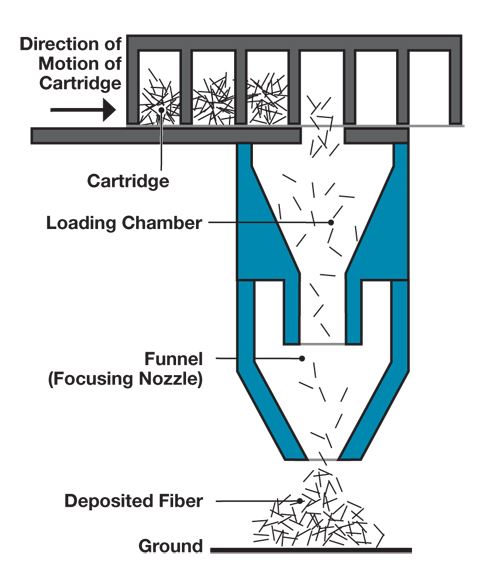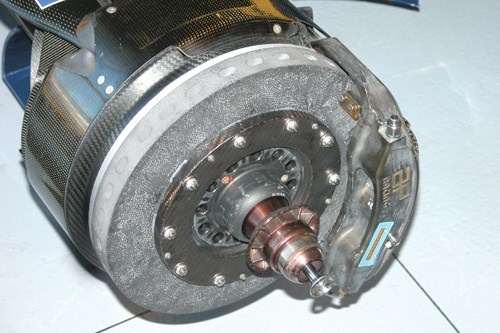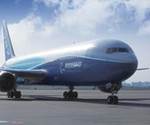Optimizing the performance of C/C brakes
Renowned architect Mies van der Rohe once observed about the nuances of building design, “God is in the details. ” The same could be said for the manufacture of carbon/carbon (C/C) brakes.
Renowned architect Mies van der Rohe once observed about the nuances of building design, “God is in the details.” The same could be said for the manufacture of carbon/carbon (C/C) brakes. Starting with the same basic raw materials, usually either pre-oxidized polyacrylonitrile (oxi-PAN) fibers or pitch-based fibers, C/C brake manufacturers can use slight variations in a number of key properties, including density, hardness, coefficient of friction, thermal conductivity and heat management, to make important contributions to brake performance. Accordingly, brake engineers continue to optimize the parameters of their processes in order to enhance brake life and reduce costs, reports Peter Fillip, director of the Center for Advanced Friction Studies at Southern Illinois University Carbondale (Carbondale, Ill.).
“It’s a pretty continuous process,” says Fillip, noting that manufacturers can make adjustments to the heat treatment cycle, chemical vapor infusion (CVI) process, fiber orientation and densification methods in order to achieve the desired selection of brake properties.
PAN vs. pitch fiber
Messier-Bugatti’s (Everett, Wash.) SepCarb III and Goodrich Corp.’s (Charlotte, N.C.) DURACARB C/C braking materials, for example, have been FAA-certified since 1995 and 2004, respectively. Using the same material matrix, however, a company can tailor a brake for a specific aircraft, which is a necessity because each aircraft has a different set of operating specifications.Oxi-PAN fiber, which is 20 to 25 percent of the price of pitch fiber, is the dominant material used in aircraft brakes, while pitch fiber predominates in high-performance racecar brakes. According to Fillip, C/C brakes made with PAN fiber are typically harder and more resistant to abrasion, a factor that reduces wear during taxiing, before and after landing. Pitch fiber C/C brakes are comparatively softer, which improves friction characteristics. Also, the cooling vents required for F1 racecar brakes are more easily molded into pitch-fiber material. To make them suitable for aircraft brakes, both fibers must be heat-treated at temperatures ranging from 1600°C to 2400°C (2912°F to 4352°F). Oxi-PAN fibers, typically, are woven into a fabric or mat-like material, placed in a disc mold, and then carbonized in a furnace, using isothermal CVI for 30 to 40 days (see "Editor's Picks," under "Learn More,” at right). The process adds density to the material and increases its thermal conductivity and heat capacity.
Heat treatment and anti-oxidants
Since the advent of fiber heat treatment technologies, oxidative wear of modern aircraft brakes has been diminishing steadily. A set of Messier-Bugatti SepCarb III carbon brakes fitted to a Binter Canarias ATR 72-500 aircraft has reportedly set an in-service endurance record of 6,470 landings. Today, a typical fleet average for C/C brakes on planes that carry more than 100 passengers is in the range of 3,000 to 4,000 landings, up from the 2,000 to 3,000 landings typical of first-generation C/C brakes.“There are two options for improving oxidative wear of C/C brakes,” says Fillip. “Increasing the thermal conductivity and heat capacity of the material, and anti-oxidant [A/O] systems.” Better heat dissipation protects against oxidation at high temperatures, and A/O systems protect against chemical oxidation from runway and plane de-icing agents, such as potassium acetate.
High-temperature heat treatment of the fibers improves thermal conductivity and heat capacity, and CVI adds density. “A good brake should have porosity of less than 10 percent and the density of the C/C matrix should be higher than 1.7 g/cc,” says Fillip, noting that greater density makes the brake material less susceptible to chemically catalyzed oxidation. While it is technically feasible to make brakes with porosity as low as 2 percent and density as high as 2 g/cc by running parts through several CVI cycles, Fillip says that the repetitions make the process cost-prohibitive.
Although the A/O systems in development today are highly proprietary, Fillip says the basic concept is to create a barrier that prevents the transport of oxidizing agents to the C/C matrix. Current efforts are directed at finding one barrier material that will work across the entire spectrum of temperatures to which an aircraft brake is exposed.
Elsewhere, researchers at Purdue University’s School of Mechanical Engineering (West Lafayette, Ind.) are investigating a novel way of improving and predicting C/C composite properties (e.g., modulus and thermal conductivity) by controlling fiber orientation. Current production methods generally employ C/C brake preforms with randomly oriented, discontinuous fibers. In one project, researchers at Purdue collaborated with Honeywell and the National Composites Center (NCC, Dayton, Ohio) to develop a programmed fiber spray deposition process for manufacture of the C/C brake preforms. In the process, chopped fiber tow is deposited into a rotating mold along with a binder resin. The resulting C/C preforms contain gradients in fiber length, volume fraction and fiber type, offering the potential to tailor the material’s microstructure for specific brake requirements. To predict the final properties of the composite, researchers conducted simulations of the deposition process, using elliptical models based on rigid-body kinematics to obtain the fiber reinforcement orientation distribution. The distribution functions then were fed into a micromechanical program that incorporates the Mori-Tanaka method and texture tensors to predict the properties of the final preforms. “Instead of having no control of the deposition of fibers, our objective was to obtain control over the deposition in these disc shapes and be able to manipulate the spatial distribution,” says Purdue’s Prof. Thomas Siegmund.
More recently, Siegmund and his colleagues have developed a new process for near-net-shape manufacturing of short-fiber composite preforms via a discrete deposition process. Siegmund says the process is analogous to inkjet printing, although in this case a cartridge-like device is used to store and “print” carbon fibers with much greater precision than other short-fiber manufacturing processes. The breakthrough here was the development of the cartridge deposition device for controlled deposition. The device is used in conjunction with a six-axis robot. Unlike the programmable powdered preform process (P4), which uses a continuous feed of chopped fiber, fiber deposition from this device is discrete and discontinuous. The pay-off is finer control of fiber distribution and orientation and, as a result, greater degrees of control over the friction and wear performance of brakes. “If you imagine a typical preform with random fiber orientation vs. one in which the fibers are aligned, there will be magnitudes of difference in a property such as thermal conductivity,” Siegmund says, explaining that fibers lined up end to end will transfer heat more efficiently.
Siegmund says the discrete deposition process was originally envisioned for auto brake manufacturing, but that it is applicable to C/C aircraft brakes and any other composite part that requires a preform.
Both the spray process and the short-fiber discrete deposition process are going through validation studies to determine their potential for commercial viability as a part of Purdue’s collaboration with various industrial partners.
Meanwhile, investigations into the use of alternate materials, such as silicon carbide and carbon-borides, have not yet produced a breakthrough, says Fillip. “If you go to silicon carbide, it wouldn’t oxidize as easily as C/C, but there are other drawbacks, such as increased noise and a much more complicated and expensive manufacturing process.”
Go/no-go and cost
Fillip notes that new innovations in wear performance do not automatically find their way onto C/C aircraft brake systems. Two factors impact the decision and both relate to cost. One factor is the FAA validation process. “The FAA has to approve all changes to braking systems, so sometimes even though a manufacturer might have a longer-wearing brake,” he explains, an incremental improvement that might be introduced on a brake system for a new plane, which must be FAA-certified in any case, might not be offered as an upgrade to the brake system on an existing plane. For the latter, the improvement must be sufficient to justify the very high cost of recertification. Similarly, a brake manufacturer might find a way to mold a brake with much better density, but the cost of manufacturing could prohibit its commercial adoption. That said, Fillip believes that these limiting factors are unlikely to deter companies from continuing to fine-tune and optimize the details of their C/C brake production processes.Related Content
Novel composite technology replaces welded joints in tubular structures
The Tree Composites TC-joint replaces traditional welding in jacket foundations for offshore wind turbine generator applications, advancing the world’s quest for fast, sustainable energy deployment.
Read MorePEEK vs. PEKK vs. PAEK and continuous compression molding
Suppliers of thermoplastics and carbon fiber chime in regarding PEEK vs. PEKK, and now PAEK, as well as in-situ consolidation — the supply chain for thermoplastic tape composites continues to evolve.
Read MoreVIDEO: One-Piece, OOA Infusion for Aerospace Composites
Tier-1 aerostructures manufacturer Spirit AeroSystems developed an out-of-autoclave (OOA), one-shot resin infusion process to reduce weight, labor and fasteners for a multi-spar aircraft torque box.
Read MorePlant tour: Albany Engineered Composites, Rochester, N.H., U.S.
Efficient, high-quality, well-controlled composites manufacturing at volume is the mantra for this 3D weaving specialist.
Read MoreRead Next
Friction products: Carbon fiber stopping power
Low weight, thermal shock resistance, and extreme strength drive growth of carbon-reinforced friction products and materials in brake applications.
Read MoreDeveloping bonded composite repair for ships, offshore units
Bureau Veritas and industry partners issue guidelines and pave the way for certification via StrengthBond Offshore project.
Read MorePlant tour: Daher Shap’in TechCenter and composites production plant, Saint-Aignan-de-Grandlieu, France
Co-located R&D and production advance OOA thermosets, thermoplastics, welding, recycling and digital technologies for faster processing and certification of lighter, more sustainable composites.
Read More































